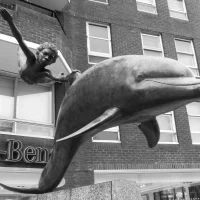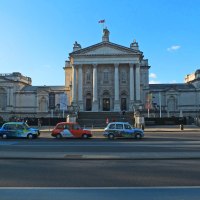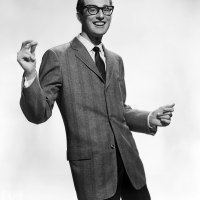London Transport’s Treasure Trove
Over the past fifty years London has been home to a number of transport museums, the first incarnation being the British Transport Museum which opened at a former bus garage on Triangle Place, Clapham in the early 1960s.
The collection housed at this early site included trains, buses and trams from all over the UK. The gallery below contains a number of images from the Illustrated London News depicting the museum as it appeared in the early 1960s.
Before long the large exhibits began to outgrow their space and so the big locomotives were transferred to the purpose built National Railway Museum in York. Other items specific to the capital were sent to a new home; the London Transport Collection which opened at Syon Park in 1973.
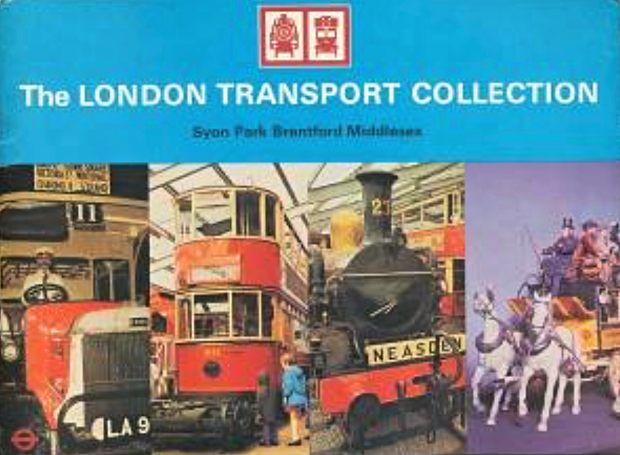
Programme from the 1970s for the London Transport Collection at Syon Park
In 1980 the collection moved once again, this time to an old market hall in Covent Garden where it has remained ever since and is now known as the London Transport Museum.
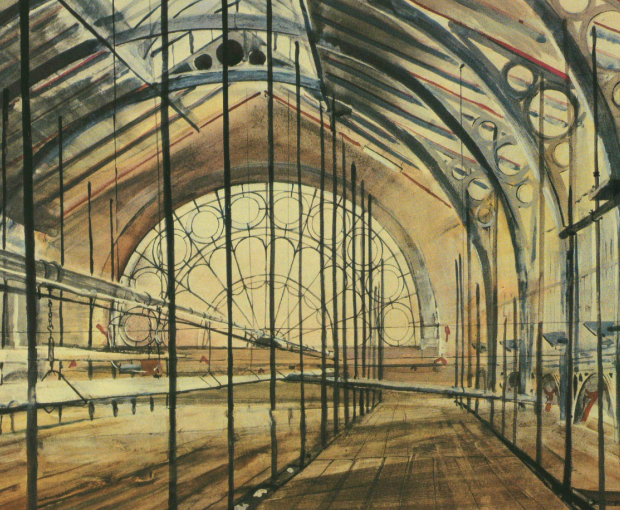
Artist’s impression of the Covent Garden market hall during its conversion into the London Transport Museum in 1980 (image: London Illustrated News)
Although the London Transport Museum is one of the capital’s most popular attractions, what visitors see represents only a small fraction of the collection. To see the rest, you must head to Acton where the museum maintains a vast, 6,000 square meter depot containing over 320,000 artefacts which cannot be squeezed into the Covent Garden site. It’s the sort of place Willy Wonka would’ve dreamt up had he dabbled in transport rather than chocolate.
The catch with the Acton Depot is that it’s only open a few times a year; the next dates being the 24th and 25th September 2016. For those of you cannot make it, here’s a taste of what lies inside…
*
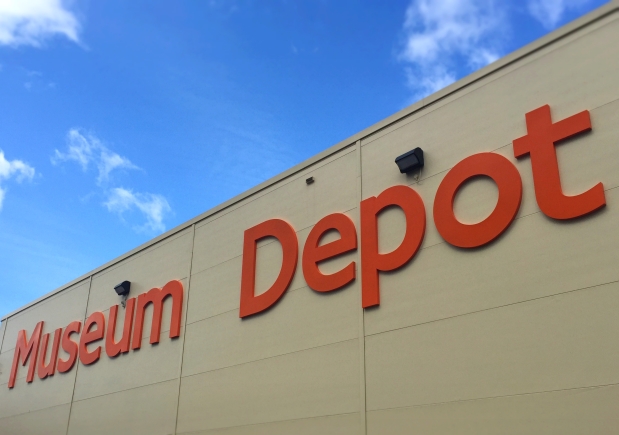
Welcome to the Museum Depot, Acton…
Signs
There are signs everywhere…
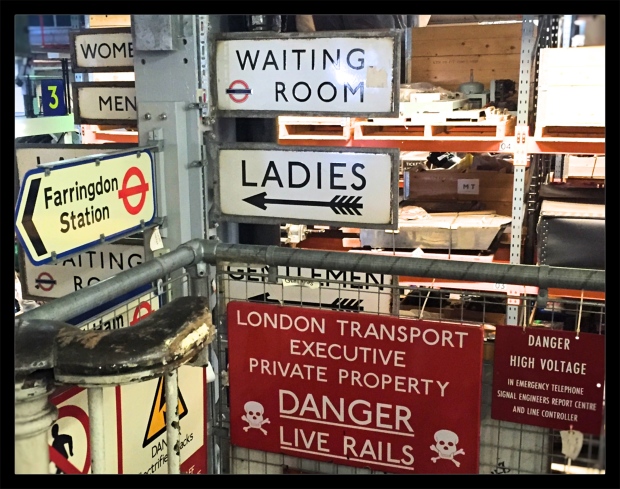
A small corner of the depot’s signage section
Row upon row of them, from all eras, taken from every station and bus stop you can imagine.

One of the many rows of signs
Countless tube roundels representing the system’s development over the years.
And lots of original maps too, many of which would look quite unfamiliar to today’s commuters. This one shows Aldwych station which closed in 1994.

Old map displaying the redundant Aldwych station
This one’s a bit of a shocker; no doubt it would deter most from trespassing on live rails.
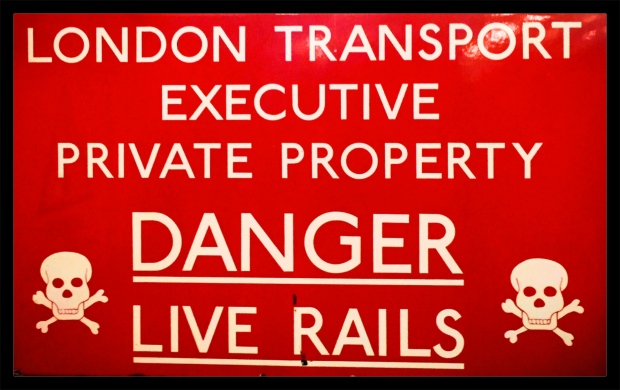
Danger!
The tube
First opened in 1863, the London Underground is the world’s oldest subterranean railway, so unsurprisingly there’s a lot of history packed into the Acton Depot.
Carriages on the earliest line; the pioneering Metropolitan Railway were wooden, gas-lit and hauled by steam locomotives. Here’s the Metropolitan’s crest, emblazoned on the side of a third-class coach.
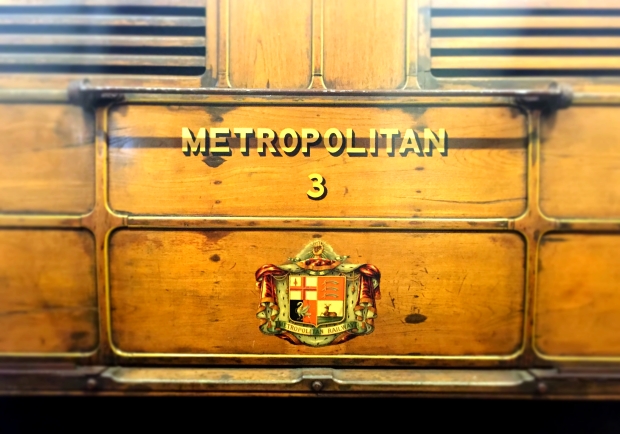
Early crest of the Metropolitan Railway
For years the Metropolitan Railway carried freight as well as commuters. Milk was one of the most popular goods, ferried from the countryside straight into the heart of The City in study churns.
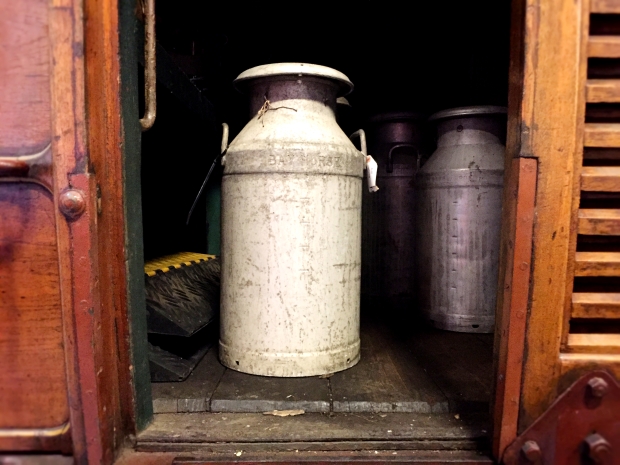
Milk churns used on the Metropolitan line
The world’s first deep-level electric tube was the City & South London Railway which opened in the 1890s between Stockwell and King William Street. It now forms part of the Northern Line. Here are some hefty iron segments forged for the original tunnel lining.
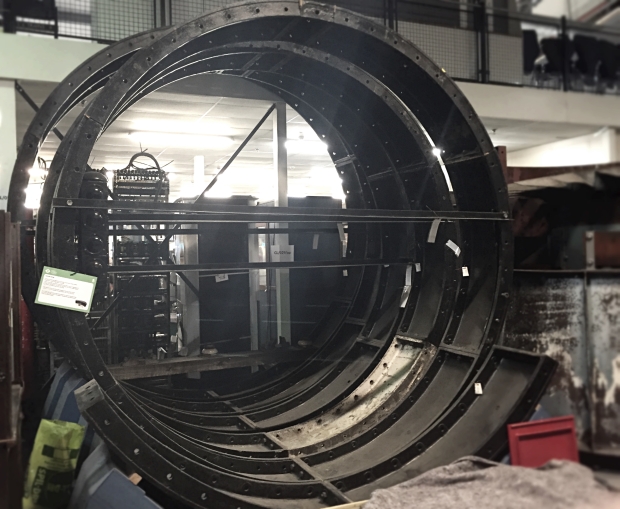
Victorian tunnel lining
The deepest station on the tube network is Hampstead which opened in 1907. Here’s a segment from a vintage lift which whisked passengers between the street and the platforms.

Passenger bell from Hampstead tube station’s original lift
This tube ‘motor car’ was built for the Central London Railway– aka the ‘Twopenny Tube’, now known as the Central Line- in 1903. Trains of this model carried passengers up until WWII and were later converted into ‘sleet locomotives’ for de-icing tracks; a task they slogged out until the mid-1980s.

1903 tube motor car
Improbable as it may sound to younger Londoners now, escalators throughout the tube network were once constructed from wood. They were phased out following the King’s Cross Fire in 1987, although the last wooden escalator remained in service at Greenford station until 2014.
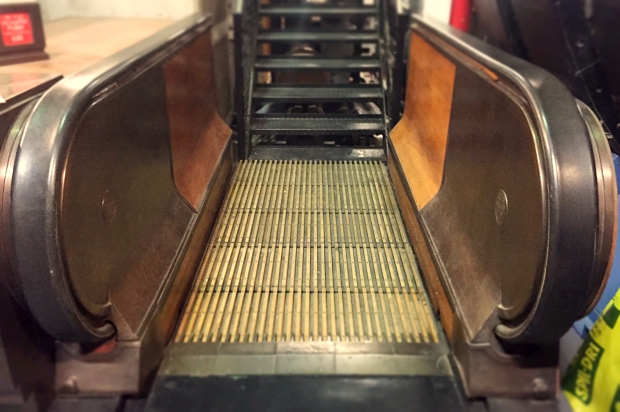
Section of one of the tube’s old wooden escalators
This is part of an experimental, winding spiral escalator which was installed at Holloway Road tube station in 1906. The project flopped and lay forgotten until 1988 when it was rediscovered in a shaft, buried beneath heaps of rubble.
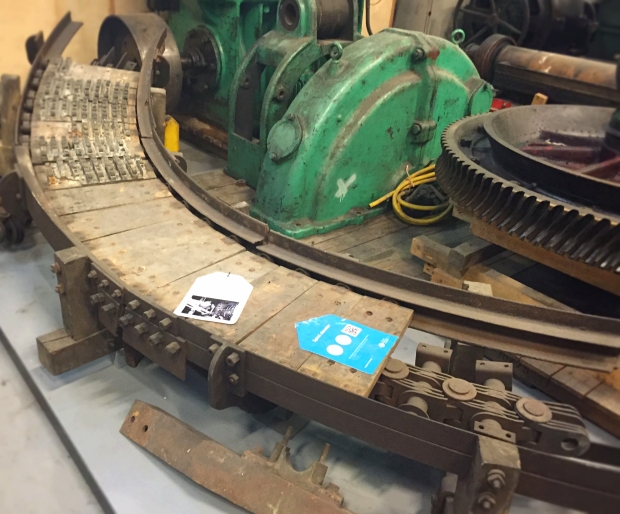
Part of an old, experimental spiral escalator
Running a shuttle service between just two stations, the Waterloo & City line is the shortest on the Underground. Until the early 1990s, the line was operated by British Rail making it something of an anomaly and the reason why this carriage is decked out in blue and white. Built in 1940, this unit was also painted dark green during in its time and remained in service for fifty years.

Vintage Waterloo & City line car
Built in 1940, this hefty fan once spun in the Adelaide Road ventilation shaft at Swiss Cottage. Because it was installed during WWII, the fan (and others like it) was designed to run backwards in the event of a gas attack. Thankfully this aspect was never required and the fan hummed away right up until 1999.

1940s ventilator
This is one of the few remaining R-Stock trains which were constructed in Birmingham and Gloucester from lightweight aluminium between 1949 and 1959. Noted for their distinctive windows and flared sides, the R-Stock trains could be spotted on the District line until 1983.

R-Stock unit
These vintage fire extinguishers were a common site on the tube for many years… and came with rather unusual instructions.
Built by Cravens of Sheffield, the A-Stock trains were introduced in 1961 and served the Metropolitan line until 2012. For a time they also ran on the old East London line which is now part of the Overground. Originally coloured silver, the A-Stock were the fastest trains on the network, capable of reaching speeds of up to 70mph as they roared through the suburbs of Metroland. They also boasted luggage racks; a quaint feature now sadly absent from today’s tube.

A-stock Metropolitan line car
For decades trains on the Underground carried guards who worked from a cordoned off area in a designated carriage, barking out the familiar phrase, “Mind the doors!” at each station. The very last train to operate with a guard ran on the Northern line in January 2000.
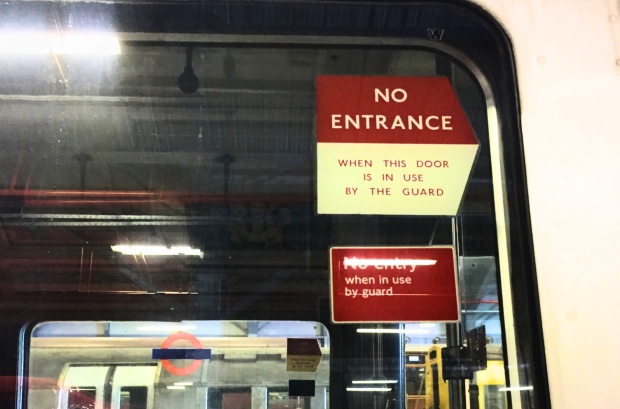
Tube carriage guard’s section
Passenger operated door buttons first appeared on tube trains in the 1930s. They were abandoned in the late 1950s, but made a return on District line trains in the early 1980s and are now in use across the network. Here’s a vintage, pre-war rubber example.
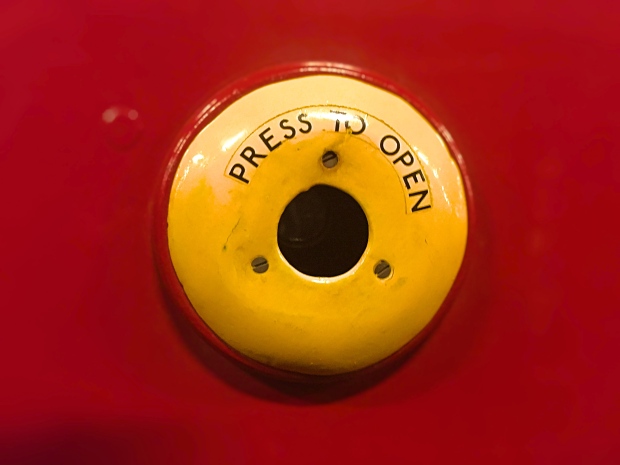
Vintage door button
When Queen Elizabeth officially opened the Victoria line in 1969, it was in this carriage that she hitched a ride- including a go in the driver’s cab.
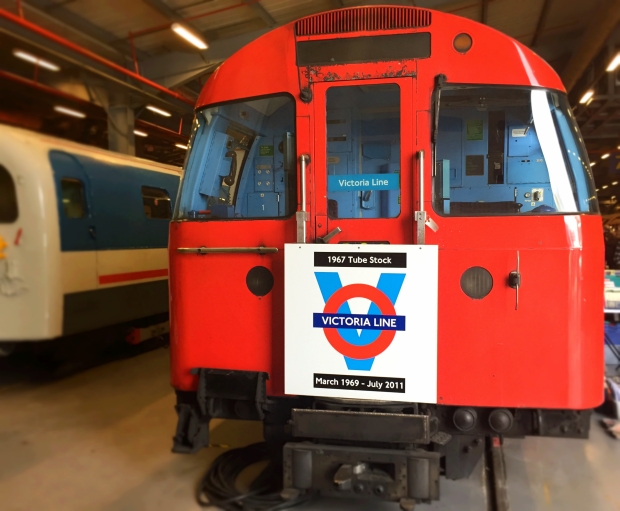
Late 1960s Victoria line train
These two tube carriage posters date from the late 1960s/early 70s. One advertises ‘Humpty on Ice’ at Wembley… the other a strongly worded warning to wannabe football hooligans.

Humpty & Hooligans
We’ve got Oyster cards and contactless now, but years ago commuters had to grapple with these hefty ticket machines which look like they belong more at home in Dr Who’s Tardis.
This train was built in 1938 and used for maintenance on the tube. Because it often worked at night when the electrical current was switched off, it was battery operated. When first delivered it was coloured maroon, but later changed to yellow to make it more visible to workers. It remained in service until 1992.
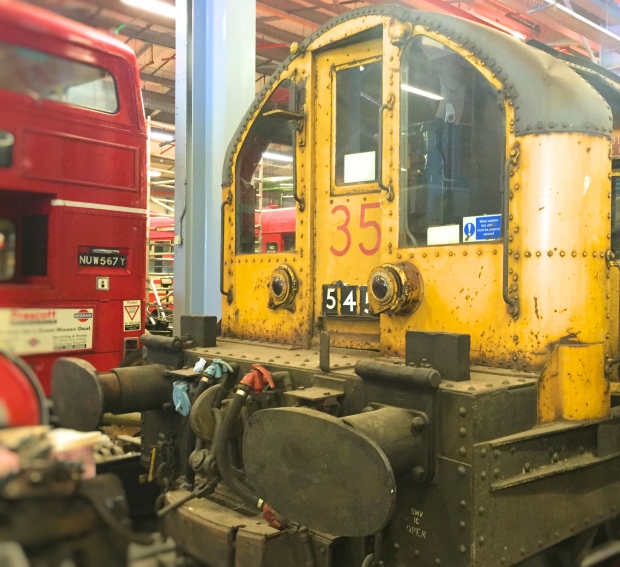
Maintenance train
Nicknamed a ’10 ton, 3-plank’, this ballast wagon was one of 100 ordered by the Metropolitan Railway in 1897. It would’ve been used during WWII by crews repairing air-raid damage and remained in service until 1970.
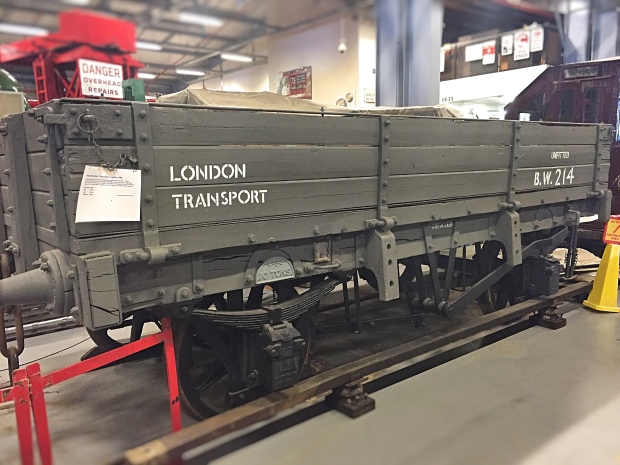
Victorian Ballast wagon
This is the funky interior of a 1983 Jubilee line carriage, complete with wooden floors and garish, orange decor. This particular design served the line until 1998. Two of its cousins can now be seen perched high above Great Eastern Street where they’ve been adapted as workshops for Shoreditch’s Village Underground. Another 1983 unit can be found tucked away inside Great Ormond Street Children’s hospital where it’s used as the studio for ‘Radio Lollipop’.

1983 Jubilee line car
This ultra-rare tube carriage appeared in 1986 as a prototype for a new Central line train. There were two other designs; one coloured red, the other blue with Londoners invited to judge which they preferred. If you’ve used the Central Line, you’ll know that this pastel green number wasn’t the winner…

1986 Central line prototype
Signalling equipment from Elephant and Castle.

Elephant & Castle signal box
There are no airs and graces at the Acton Depot. Much of it feels like an attic where various bits and bobs have been chucked to gather dust- such as these signs and knick-knacks.

Bits & bobs
Taxis
This beauty’s a London Beardmore Taxi, licensed for use in 1955. Beardmores were considered the Rolls Royce of taxis and a number of models were designed between the 1910s and 1960s. As with other vintage cabs the luggage rack was open to the elements resulting in a lot of soggy suitcases.
For many cabbies including myself, this sign strikes a note of fear… for it used to be displayed outside the Public Carriage Office on Penton Street, Islington, the intimidating building where students on the Knowledge had to sit their many, fearsome appearance exams. I had to pass this metal sign many times and was nervous as hell every time I did. The PCO has since moved to Southwark.

Public Carriage Office sign from Penton Street, Islington
Based upon an earlier design for a prototype Beardmore taxi, the Metrocab was first made available to cabbies in 1987. Production ceased in 2006, but the Metrocab brand will soon be reentering the market with a new zero-emission model.

Metrocab
Badge for the London Vintage Taxi Association.

London Vintage Taxi Association badge
Buses, Trams and Trolleybuses
Horse-drawn omnibuses were the Routemasters of their day. Each route was colour coded which was pretty vital in the days when many folk were illiterate and is a system which lives on in today’s tube map. This particular wagon was introduced in 1885 and trotted the yellow line from Baker Street to Waterloo until 1911.
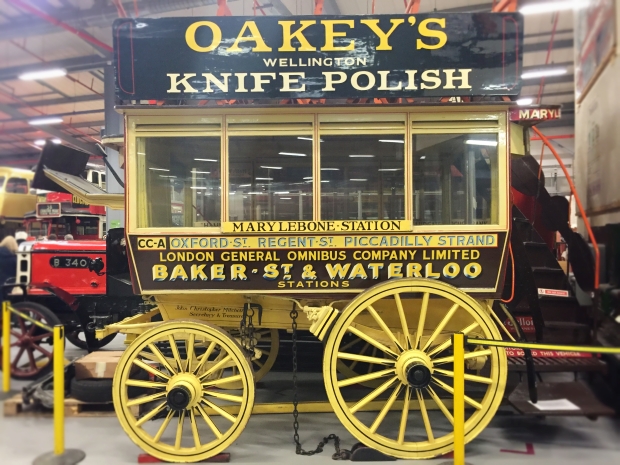
London Omnibus
This beautiful old tram was built in 1908 in Motherwell, Scotland and rattled through London until 1952.

1908 tram
Known as a B-type, this was one of London’s first motor buses and began running between Barnes and Liverpool Street in 1914. When WWI erupted in August of that same year many London buses- including this one- were commandeered for use on the Front Line to act as ambulances and troop transporters. This gnarled warrior was restored in 2014 to mark the 100th anniversary of that appalling conflict.
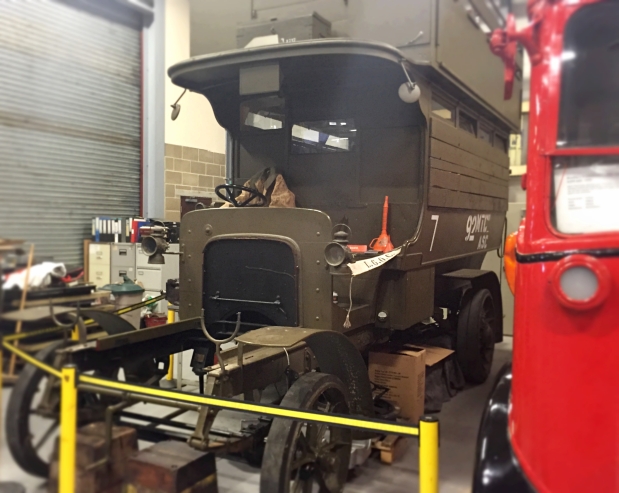
London bus used in the Great War
This Green Line coach used for long distance express services between London and the surrounding counties was built in 1930. During WWII this particular bus was used as an ambulance around Hendon and Golders Green. Other vehicles of this model were adapted by the American army as mobile kitchens dubbed ‘clubmobiles’.
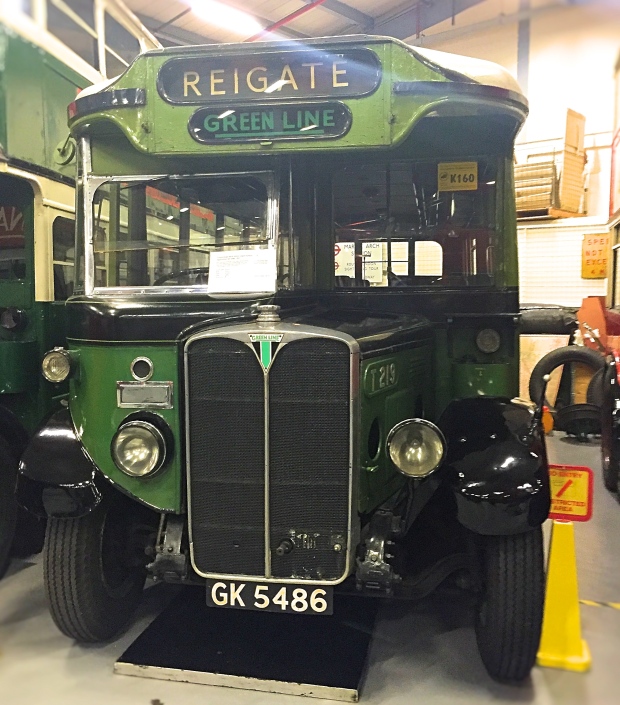
Early 1930s Green Line bus which later served as an ambulance during WWII
The gallery below features more classic buses from the early 20th century…
Trolleybuses operated in London between the 1930s and 1960s. This one served route 604 between Hampton Court and Raynes Park.

Trolleybus
This is a Tower Wagon, built in 1937 for maintaining and repairing tram and trolleybus wires. Crew working on the raised platform communicated with the driver by ringing a bell.

Tower Wagon
This American Indian chief was the mascot of Guy Motors, a manufacturer based in Wolverhampton. He’s on top of a Greenline bus that was built in the 1950s and based at a garage in Amersham.

American Indian mascot
This Green Line bus was built in 1977 and remained in service until 1982. Although reliable, it had a reputation for having very bumpy suspension.

1977 Green Line bus
Miniatures
As well as the full-size trains, buses, cabs and trams, the Acton Depot also contains many intriguing miniatures.
This is a scale model of the vast Aldenham depot which was based near Elstree. Opened in 1956, Aldenham became the main service and maintenance centre for London’s bus fleet. It closed in 1986 and was demolished ten years later.

Aldenham bus centre model
A tiny tube train…

Miniature tube train
And an architect’s model of a Bank station platform.
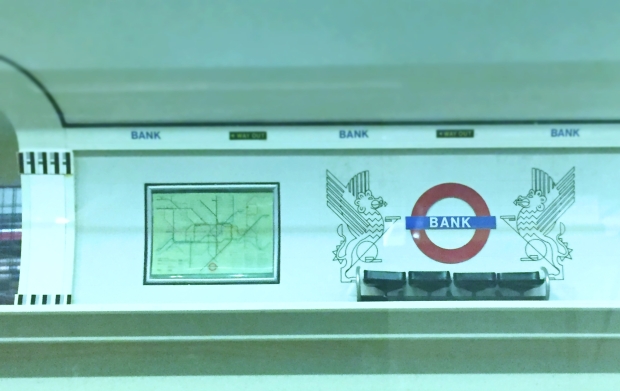
Model of Bank station
This rather sombre model lies shrouded in a quiet corner of the depot. It’s a representation of Kings Cross underground station, made for the 1988 Fennell inquiry which examined the causes behind the tragic fire that had claimed 31 lives the previous year.
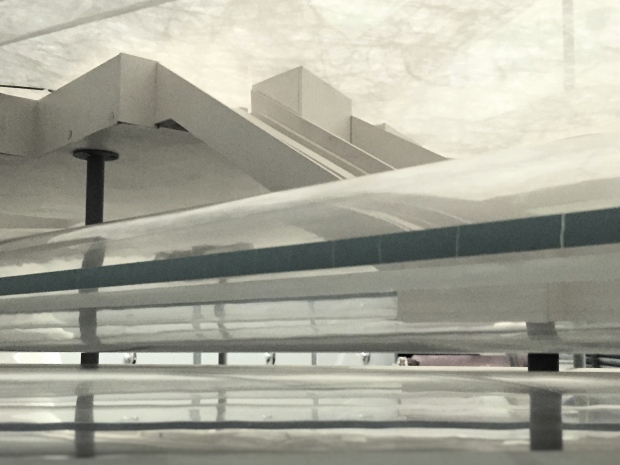
Model representing Kings Cross tube station
Prototype model for the new generation of tube carriages.
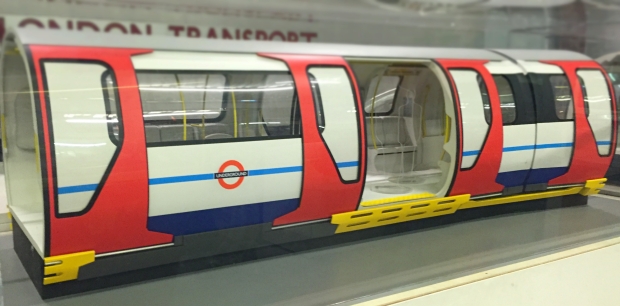
Tube prototype
This charming architect’s model from the late 1950s was used to represent Bank stations’s proposed airport-style ‘travelator’ which opened in 1960.
This architect’s model for Canary Wharf station was created by Sir Norman Foster’s company in 1990. The station opened in 1999 and was recently voted London’s best loved tube station.
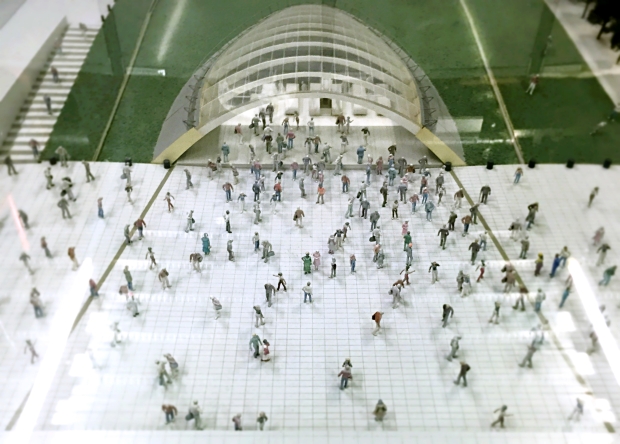
Architect’s model of Canary Wharf, 1990s
*








